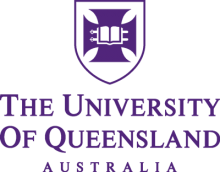Browse the full results of the World University Rankings 2022
Download a copy of the World University Rankings 2022 report
Australian universities have held their ground in Times Higher Education’s latest World University Rankings, despite the rapid rise of regional rivals.
More than one-third of Australia’s 37 ranked universities have improved their standing since last year, while just seven lost ground. New Zealand fared similarly, with four of the eight ranked universities improving their standings and just one going backwards.
THE’s chief knowledge officer Phil Baty lauded the “strong and stable” results given “the very clearly increased competition at the top of the tables”. He said that the leading institutions of Hong Kong, South Korea, Singapore, Japan and mainland China had all notched their highest rankings since a new methodology was introduced in 2016.
But Mr Baty cautioned against complacency. “The full effects of the pandemic on Australian higher education will take some time to filter through into the rankings – and of course, the knock-on effects of reduced revenues could be seen for years,” he said.
The pandemic’s impact has been captured in the second of two reputation surveys and the last five years of bibliometric data, which collectively determine about two-thirds of ranking scores. But metrics such as institutional income and student and staff numbers were sourced from pre-Covid times.
To date, Australasian universities have proven largely immune to competition from mainland China, where 16 of the 20 top-ranked institutions ascended the league table – led by Peking University, which surged into the top 20 and joined neighbouring Tsinghua on equal 16th.
Fewer than 20 of mainland China’s 97 ranked universities record worse results than last year. The University of Hong Kong surged nine places to joint 30th, while the Chinese University of Hong Kong debuted in the top 50 and Hong Kong Polytechnic University joined the top 100. The National University of Singapore matched its previous best result of 21st.
Such improvements have occurred mainly at the expense of North America. Almost half of the 23 top 50 institutions in the US lost ground, as did five of the seven top 200 Canadian universities.
Australia held firm, with six universities in the top 100 and another six in the top 200. While the front-running University of Melbourne slid two places to 33rd, two other elite institutions – Monash and the University of Queensland (UQ) – each climbed more than half a dozen places.
They joined the Australian National University and the University of Sydney in a cluster of Australian institutions ranked between 54th and 58th. UQ and Monash logged particularly strong improvements in their industry income scores.
UQ said that the result demonstrated its hunger for “ambitious” industry partners. “Strong collaboration is at the heart of UQ’s research efforts,” said vice-chancellor Deborah Terry. She cited UQ’s success in securing Australian Research Council funding for collaborative research, and the evolution of its commercialisation arm Uniquest into “Australia’s leading technology transfer company”.
Western Sydney University leapfrogged seven Australian rivals in breaking into the global top 250. Vice-chancellor Barney Glover said that he was particularly pleased with the improved teaching score, given the university’s aspiration to produce “the next generation of innovators, thought leaders and civic-minded citizens”.
New Zealand’s leading University of Auckland climbed 10 places to joint 137th. Vice-chancellor Dawn Freshwater credited Auckland’s dedicated staff, its international research collaborations, its success in retaining foreign students and its PhD output. “We are starting to see the reputational benefit of our commitment to the Sustainable Development Goals,” she added.
Elsewhere in the region, the University of the South Pacific – a unique institution spread across 12 island nations – put a difficult year of leadership troubles to bed by securing its first THE ranking.
Register to continue
Why register?
- Registration is free and only takes a moment
- Once registered, you can read 3 articles a month
- Sign up for our newsletter
Subscribe
Or subscribe for unlimited access to:
- Unlimited access to news, views, insights & reviews
- Digital editions
- Digital access to THE’s university and college rankings analysis
Already registered or a current subscriber? Login










